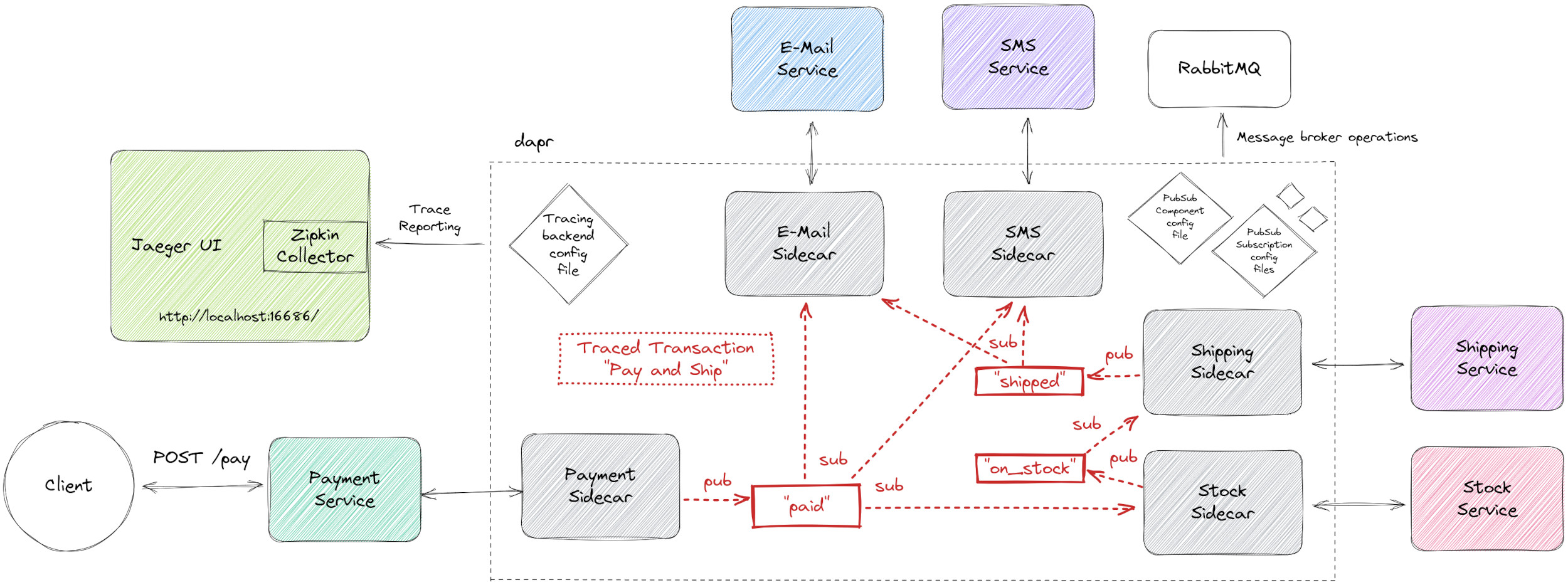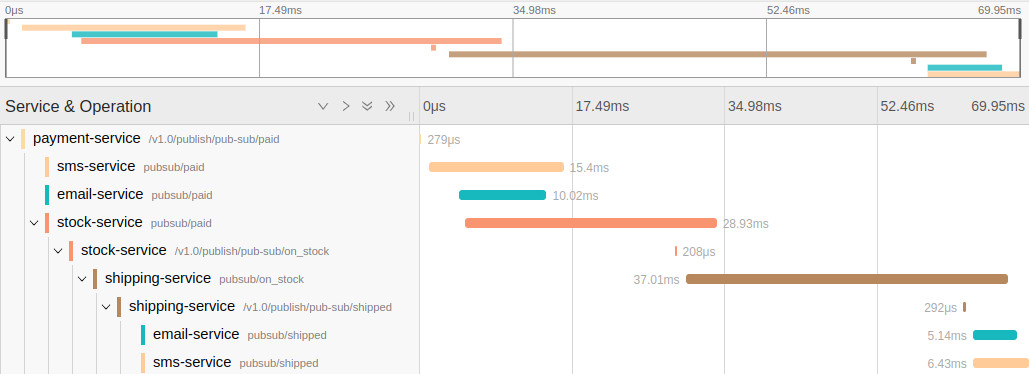The following scenario is implemented here.
A client pays an order. Then the payment service publishes a message on the "paid" topic to inform other services. E-Mail, SMS and the Stock Service are subscribers of this topic. Thus, the customer gets notified about the payment via E-Mail and SMS. The Stock service checks whether the item is on stock (it is in our case) and publishes a message on the "on_stock" topic. The Shipping service is the single subscriber of that topic. It arranges the shipment and when the item is shipped, it publishes a message on the "shipped" topic. Both, E-Mail service and SMS service are subscribers of that topic and again inform the customer about the shipment.
We are tracing this Pub/Sub based transaction.
As the trace starts at the Payment service,
the dapr sidecar of it creates the Trace ID and appends
it as request header (called traceparent) to the published message.
All intermediate services (Stock and Shipping) have to manually forward
this header when they publish their messages.
This is propagating sequential service calls.
In contrast, both, the E-Mail service and SMS service are only subscribers forming ends of the trace.
Therefore, they do not need to care about any further tracing actions.
All tracing operations like creation and reporting to Jaeger via Zipkin collector are done by dapr,
which is explicitly configured to do distributed tracing using the tracing-config.yaml.
- dapr CLI
- Java (Version >=17)
- A running RabbitMQ instance
docker run --rm -it -p 15672:15672 -p 5672:5672 rabbitmq:3
- A running Jaeger instance
docker run \ -e COLLECTOR_ZIPKIN_HOST_PORT=:9412 \ -p 16686:16686 \ -p 9412:9412 \ jaegertracing/all-in-one
./gradlew buildAllServicesdapr run --app-id payment-service --app-port 8080 --app-protocol http --dapr-http-port 3500 --components-path components/local --config tracing-config.yaml -- java -cp payment/build/libs/fat.jar org.example.PaymentKtdapr run --app-id email-service --app-port 8081 --app-protocol http --dapr-http-port 3501 --components-path components/local --config tracing-config.yaml -- java -cp email/build/libs/fat.jar org.example.EmailKtdapr run --app-id sms-service --app-port 8082 --app-protocol http --dapr-http-port 3502 --components-path components/local --config tracing-config.yaml -- java -cp sms/build/libs/fat.jar org.example.SmsKtdapr run --app-id shipping-service --app-port 8083 --app-protocol http --dapr-http-port 3503 --components-path components/local --config tracing-config.yaml -- java -cp shipping/build/libs/fat.jar org.example.ShippingKtdapr run --app-id stock-service --app-port 8084 --app-protocol http --dapr-http-port 3504 --components-path components/local --config tracing-config.yaml -- java -cp stock/build/libs/fat.jar org.example.StockKtAs you can see, the dapr CLI is used to start up both, the dapr sidecar and the service.
curl -X POST http://localhost:8080/payVisit http://localhost:16686/

